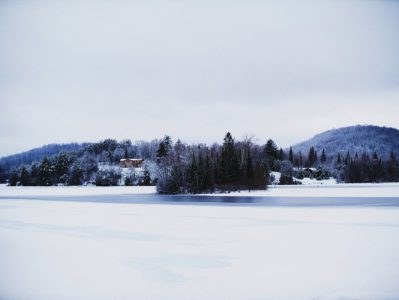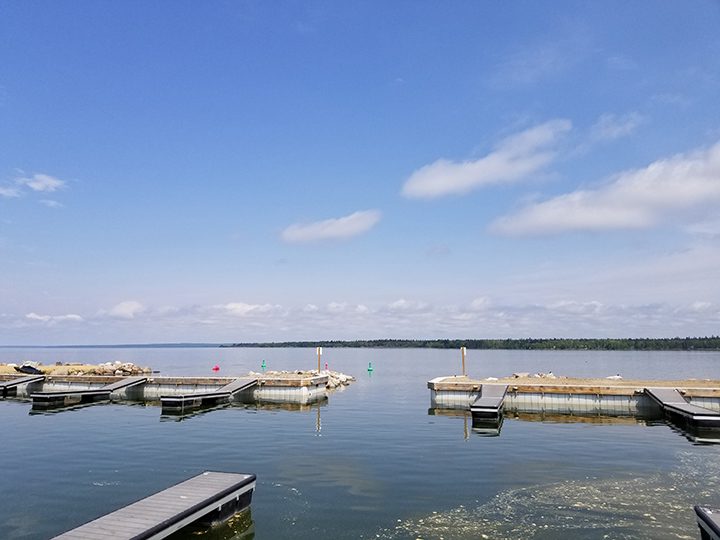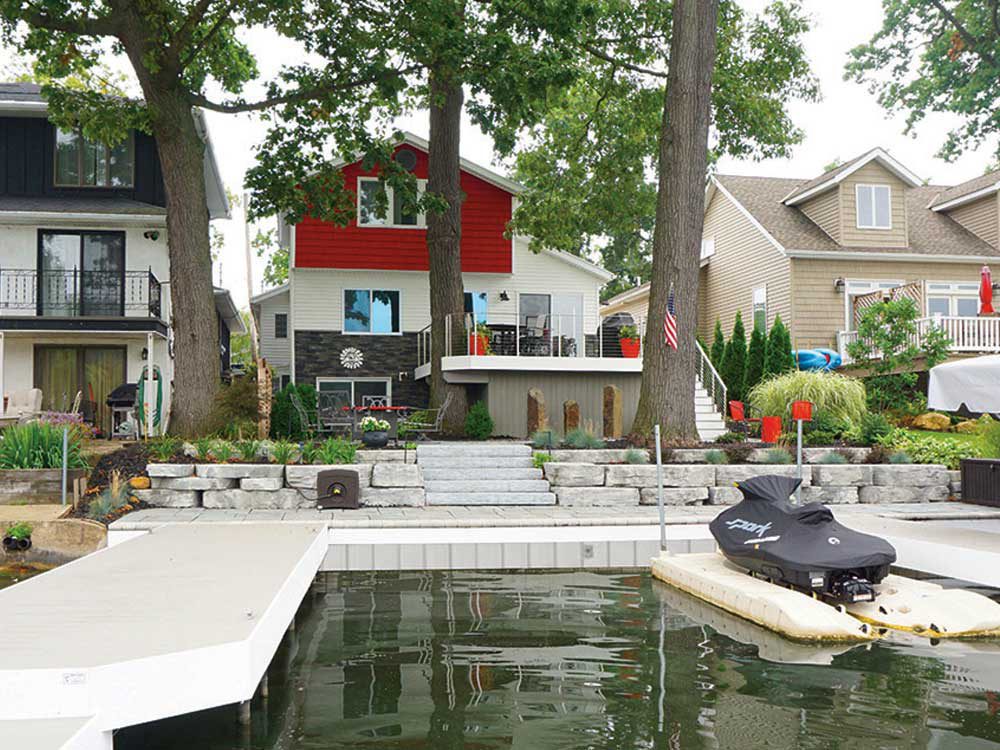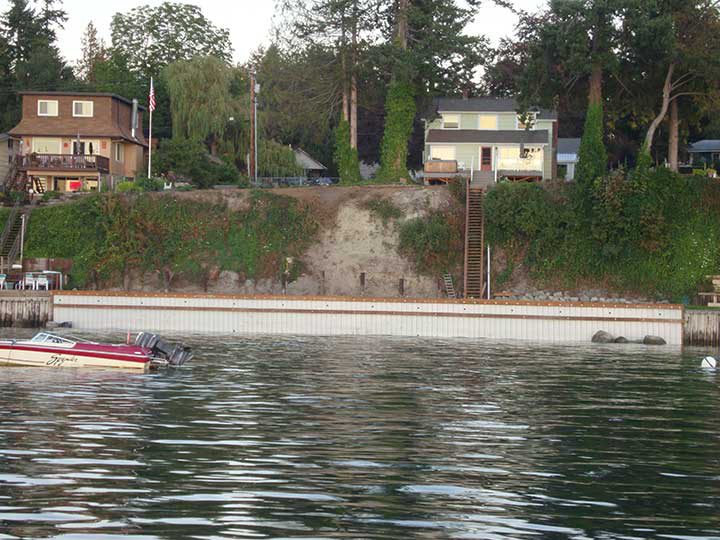How Does Cold and Ice Affect Seawalls, Bulkheads or Lake Walls?
Once temperatures begin to rise, the winter ice warms and undergoes thermal expansion until it reaches the melting point. As the ice expands laterally towards the shoreline, it can cause extensive damage to docks, retaining walls, seawalls and at times, even homes. This effect is known as ‘ice push’ or ‘ice shove’. Although damaging enough on its own, high winds across these bodies of water only magnify the damage even more.

Different Types of Seawall Construction in Cold Weather Climates
With strength being priority one, the two most effective materials to use in these types of climate conditions have been traditionally steel sheet piling and concrete. Although they have strength, there are drawbacks to using these materials.
Steel sheet piling is expensive to purchase and heavy to transport. In addition, due to steel being so susceptible to corrosion, it is common for a heavier gauge steel to be installed allowing for sacrificial corrosion to occur, only driving the price up even higher.
Concrete seawalls, on the other hand, are less expensive than steel, but because it is a porous material, it will absorb water over time and eventually freeze. This causes cracks in the wall that will only get larger over time. The other disadvantage to a concrete seawall is there is no penetration into the ground to prevent the loss of soil from behind the wall. Eventually, these walls crack, chip and begin to lean forward, eventually falling over.
Corrugated, single vinyl sheet piling has become more popular in these conditions due to the lower cost of materials, ease of installation, availability, overall aesthetics and a design life of 50 years (in perfect conditions). However, there are drawbacks to using this material as well.
A major disadvantage to the use of single corrugated vinyl sheet piling material is that it does not possess the strength needed to endure the harsh winters, especially ice push.
Another disadvantage to corrugated vinyl seawalls is that a common installation requires the use of wooden poles or pilings as well as horizontal wooden beams, commonly referred to as ‘wales’, to be constructed on the face of the wall in order to provide support and additional strength. Unfortunately, this opens the door for ice to cause even more damage since it is common for ice to freeze along the corrugations. This allows the ice a way to “grip” the wall and pull it horizontally, often pulling the corrugated vinyl sheet piling completely out of the ground.
On bodies of water where higher winds are common, the ice will crack, shift and begin to stack up against the seawall. After time, the ice will collect under these horizontal wooden beams/wales on the face of the wall and literally lift the sheet piling out of the ground.
Excellent Material Option for Seawalls, Bulkhead Walls or Lake Walls in Cold Weather
The latest technology available in waterfront property protection that has shown to work in cold climates is the Truline system. This article shows photos of Truline seawalls installed in colder climates of Canada, Ohio, and Washington. In addition to these areas, the Truline system has protected shorelines in regions with cold weather in Manitoba, Canada; North Dakota, Wisconsin, Michigan, New York, and New Jersey. Unlike the other traditional materials, Truline:
1) Provides the strength of steel-reinforced concrete
2) Offers the longevity and protection of a synthetic PVC plastic like that of vinyl sheet piling
3) Penetrates the ground to prevent the loss of soil from behind the wall
4) Is light and easy to install
5) Has a flat face profile and not corrugated
6) Does not require the use of front poles/piling and horizontal beams/wales

Truline hybrid seawalls have been installed on fresh water lakes in Canada, as far as 350 miles north of the US-Canada border. The above photo was taken in the Fall of 2018 and the wall was installed in 2010 in Saskatchewan, Canada. These walls routinely see temperatures as low as -40°F and are frozen in for up to half the year with up to 4 feet of ice.
Our Canadian contractors are happy to report none of their installed Truline seawalls have experienced damage as a result of exposure to ice. There are significant reasons for this. First, the patented Truline wall system is a vinyl clad, steel-reinforced concrete wall. But beyond the obvious strength of concrete, a Truline wall has no corrugation for flowing ice to apply horizontal pressure on the wall. In addition to having the flat panel construction, Truline walls can be constructed with up to 12 foot exposures without a horizontal waler being required. This is a significant advantage when ice build-up is an issue since the waler provides a contact point to push the seawall, or bulkhead, upward.
Another area with cold climate and ice where Truline lake walls have been installed is in Northeast Ohio and Washington. These areas can experience up to 2 feet of ice during the winter. A local contractor in Ohio, Cornerstone Landscaping, provided the following review:
“We originally searched all over the US for a seawall system that was the most durable and longest lasting wall system available. We discovered Truline and after a lot of research we quickly found that Truline is the strongest and longest lasting seawall system available on the market. Since, we have installed numerous seawalls, and all have performed very well even under ice / sub-zero temperatures. Our “oldest” Truline wall has been in for about 3 years now and has seen up to 2 feet of ice on the lake. No issues whatsoever. We are very pleased with the Truline system and will continue to recommend it to our clients.”

For peace-of-mind and confidence that your waterfront property is protected, ask your contractor for Truline – The Ultimate Seawall. It is like no other seawall on the market today. Truline is an innovative and hybrid system offering an 8” thick concrete seawall protected within a vinyl form – utilizing the best of two proven materials – strong steel-reinforced concrete and long-lasting vinyl. And, it is aesthetically-pleasing with its flat surface.

